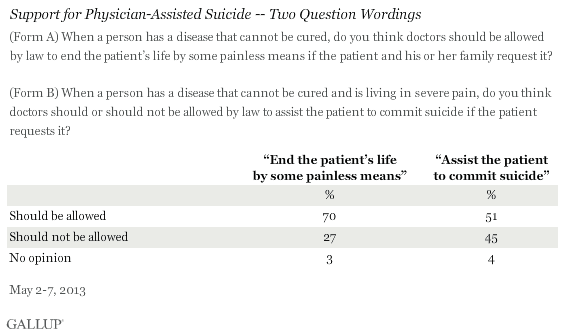State Fair polls show that words can mean life or death

The Great Minnesota Get-Together is a wrap and Compassion & Choices jumped on the opportunity to cite statistics from the 2016 State Fair Poll, which included a question about support for assisted suicide.
The 2016 poll shows public support at around 67 percent. Naturally, advocates consistently refer to these results as a strong indicator that we need legal assisted suicide here in Minnesota. Compassion & Choices consistently cites our State Fair polls in their literature.
They try to make the case that those who oppose assisted suicide are a shrinking minority, that the tide is shifting and support for this practice is on the rise – that explains the numbers.
But that isn’t the whole picture. As is often true of the so-called “Death with Dignity” movement, language matters. The text of the polling question is as follows:
When a mentally capable adult is dying from a terminal illness, do you think this adult should be allowed to receive a prescription for life-ending medication they may self-administer?
Sixty-nine percent say: yes. But what if the question was phrased differently? What if it read,
When a mentally capable adult is dying from a terminal illness, do you think this adult should be allowed to receive a prescription for a deadly overdose?
or
When a mentally capable adult is dying from a terminal illness, do you think this adult should be allowed to receive help from their doctor in committing suicide?
Make no mistake, all three questions are exactly the same in their essential content. But more critical research has shown that these three questions could produce radically different outcomes.
A 2013 Gallup poll compared the results of two nearly identical questions:

Lydia Saad, “U.S. Support for Euthanasia Hinges on How It’s Described”. Gallup, 2013.
Notice how such a small change – from “some painless means” to “commit suicide” – meant a 20% decrease in support.
The study concludes,
Americans generally favor allowing doctors to assist terminally ill patients in ending their lives, but the degree of support ranges from 51% to 70%, depending on how the process is described. A wording that refers to the patient’s intention to end his or her life as “suicide,” doesn’t say family members are involved in the decision, and doesn’t specify that the procedure will involve “painless means” produces lower support than the alternative wording. However, the resulting difference offers important insights into the complex nature of Americans’ views on this question, as well as the negative connotation suicide has, generally. Underscoring this, the same poll finds just 16% of Americans saying suicide is morally acceptable. At the same time, the public is evenly split over whether “doctor-assisted suicide” is morally acceptable: 45% say it is, and 49% say it is not.
Once again, this is a battle largely won and lost with language. But it is important to note that while this year’s State Fair polls show a large majority of Minnesotans support assisted suicide, that number may be lower than it seems.
We desperately need to use accurate language in the assisted suicide debate.Compassion & Choices and other pro-assisted suicide groups insist on these euphemisms and refuse to concede that it’s assisted suicide that they support. But it’s not “medical aid-in-dying” – death is not a form of medical treatment. It’s not “death with dignity” – if so, then what about the countless men and women who do fight for their lives despite suffering and disability?
In this case, words are a matter of life and death.